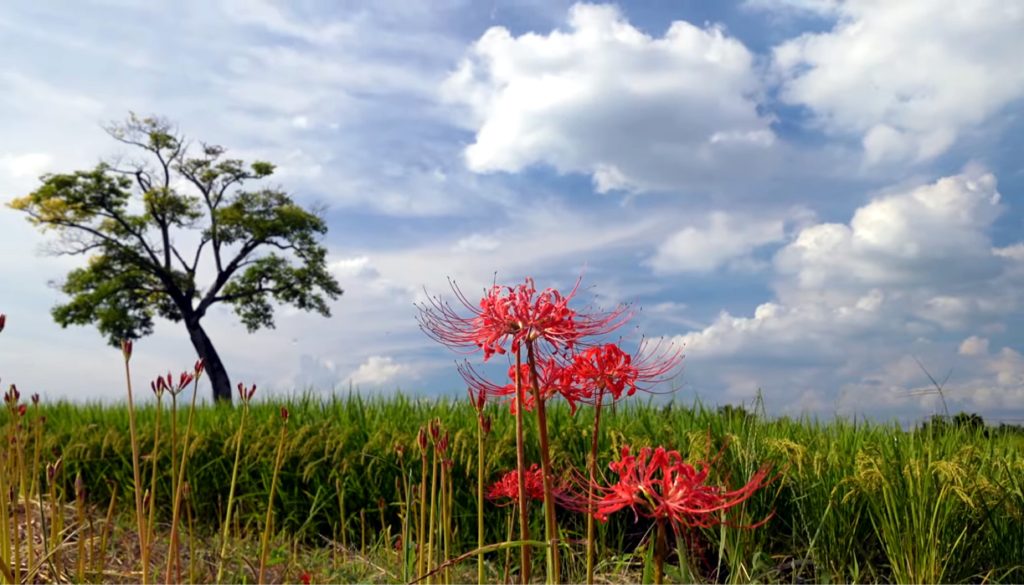
♭♯♭ 曼珠沙華 ♭♯♭
We often use the phrase ‘Japan’s original landscape.’ In this context, the ‘original landscape’ refers to the collective image of an old, typical Japanese scene that comes to mind for the Japanese people. However, if you were to ask which era in ancient Japan this ‘old Japan’ represents, it becomes a perplexing question. The key to this landscape, in this case, is the cluster amaryllis. When you inquire about when the cluster amaryllis began to be seen in this way, there are various theories, but the ultimate answer seems to be that we do not know. If we assume it was introduced alongside rice cultivation, it could date back to the Jomon period, and if we had clear documentary evidence, it might be attributed to the Muromachi period.
Asukamura, a small village located in the central part of Nara Prefecture, was once the site of Asuka-kyo, the capital that flourished as the center of Japan’s politics, economy, and culture. The remnants of its prosperity from 1400 years ago, hidden amidst the tranquil countryside, stir the romance of those who visit. The cluster amaryllis that bloom there evoke a sense of nostalgia even for first-time visitors, making it truly worthy of being called ‘Japan’s original landscape.
「日本の原風景」と言う言い方をよくします。この時の原風景とは、日本人が思い浮かべる最大公約数的な古い日本の平均的な風景を意味するようです。それではその古い日本とはどの時代の日本なのかと問われたら、はたと困ります。彼岸花が咲くこの風景は、ポイントは彼岸花です。彼岸花がいつの時代からこうして見られる様になったのか、諸説あって、結論から言えば分からないと言うのが答えの様です。稲作とともに持ち込まれたとすれば、縄文時代に遡れますし、はっきりした文献的証拠となれば、室町時代と言う事になりそうです。
奈良県の中央部に位置する小さな里、明日香村は、かつて日本の政治・経済・文化の中心として栄えた、飛鳥京の地です。のどかな田園風景の中に見え隠れする1400年前の栄華の名残が、訪れる人のロマンをかきたてます。そこに咲く彼岸花は、初めて訪れてもどこか懐かしさを感じる、まさしく「日本の原風景」と言っていいでしょう。
